Do you have a question about the Cessna T303 and is the answer not in the manual?
Inspect for security, presence and legibility.
Check condition and operation of heater, air systems, and fans.
Inspect static wicks for security, corrosion and condition.
Inspect hydraulic power pack for leaks, security, and service.
Inspect nose gear assembly for security, damage, and wear.
Check pitot heater operation.
Inspect pitot tube and lines for security and damage.
Inspect nose baggage compartment light for security.
Check nose baggage door for condition and security.
Check fire warning lights and fire extinguisher.
Inspect trim tab controls and indicators for security and damage.
Check oxygen system, regulator, masks, hoses, and cylinder.
Inspect seat rails for cracks.
Check wings for loose rivets, cracks, and security.
Check main gear system, assembly, struts, wheels, and tires.
Inspect fuel lines, valves, and pumps.
Inspect battery installation, cables, and fuseholders.
Inspect detection control unit for security and damage.
Inspect rudder, bellcrank, cables, trim tab, gust lock, yaw dampener, and elevator.
Inspect horizontal and vertical stabilizers for cracks and fasteners.
Inspect detection sensor for security and damage.
Inspect propeller spinner, blades, hub, governor, and mounting.
Check exhaust system for security, cracks, and slip joints.
Perform engine oil change, filter replacement, and check oil pressure system.
Check starter, solenoid, and electrical connections.
Inspect engine compartment, mounts, hoses, and baffles.
Inspect engine, cylinders, crankcase, and oil sump.
Clean and rotate spark plugs, check ignition cables and magnetos.
Check engine driven fuel pumps.
Refer to Manufacturer's Overhaul Manual for inspection procedures.
Check alternator belt tension, wires, and supports.
Inspect vacuum system air filter and suction gauge.
Ensure all required items are lubricated and serviced per manual.
Address discrepancies, replace removed parts.
Check avionics, flight, and engine instruments.
Check for oil and/or fuel leaks.
Check for required materials.
Check compliance with Service Letters and Airworthiness Directives.
Inspect battery installation, cables, wiring, and external power receptacle.
Inspect ailerons, trim tabs, flaps, and controls for condition and security.
Clean fuel strainer, check fuel selector valve, system plumbing, and bays.
Check deice system, boots, filter, and propeller deice components.
Check main gear system, assembly, struts, wheels, tires, and retraction arms.
Check cockpit, navigation, landing, and taxi lights.
Inspect ELT, antenna, airspeed, compass, turn/bank, horizon, and direction gyros.
Inspect main gear doors and nacelle baggage door.
Inspect nacelle firewall structure and nacelle structure.
Check wings for loose rivets, cracks, fasteners, and access plates.
Inspect propeller spinner for cracks and security.
Inspect engine compartment hoses and induction air filter.
Check engine exhaust system for security and cracks.
Inspect fuel injection system, nozzles, plumbing, and flow indicator.
Inspect nose gear assembly, struts, torque links, dampener, wheels, and tires.
Check engine oil breather separator.
Check engine controls for travel, security, and damage.
Inspect manifold pressure, tachometer, EGT, oil, and CHT gauges.
Inspect seat rails for cracks.
Ensure all required items are lubricated and serviced per manual.
Address discrepancies, replace removed parts.
Check avionics, flight, and engine instruments.
Check for oil and/or fuel leaks.
Check for required materials.
Check compliance with Service Letters and Airworthiness Directives.
Inspect rudder, bellcrank, cables, trim tab, gust lock, yaw dampener, and elevator.
Inspect horizontal and vertical stabilizers for cracks and fasteners.
Inspect propeller spinner for cracks and security.
Inspect engine compartment, mounts, hoses, and baffles.
Inspect engine, cylinders, crankcase, and oil sump.
Clean and rotate spark plugs, check ignition cables and magnetos.
Check engine exhaust system for security and cracks.
Refer to Manufacturer's Overhaul Manual for inspection procedures.
Perform engine oil change, filter replacement, and check oil pressure system.
Inspect detection sensor for security and damage.
Inspect battery installation, cables, and fuseholders.
Check wings for loose rivets, cracks, and security.
Check main gear system, assembly, struts, wheels, and tires.
Inspect nose gear assembly, struts, torque links, dampener, wheels, and tires.
Inspect detection control unit for security and damage.
Check fire warning lights and fire extinguisher.
Inspect seat rails for cracks.
Ensure all required items are lubricated and serviced per manual.
Address discrepancies, replace removed parts.
Check avionics, flight, and engine instruments.
Check for oil and/or fuel leaks.
Check for required materials.
Check compliance with Service Letters and Airworthiness Directives.
Inspect alternator control unit, volt ammeter, and circuit breaker panel.
Inspect seats, seat belts, and baggage tie-downs.
Inspect control wheel, rudder pedals, cables, control column, and flap controls.
Check cockpit, navigation, landing, and taxi lights.
Inspect airspeed, compass, turn/bank, horizon, direction gyros, and stall warning system.
Refer to manufacturer's service manual.
Check oxygen system, regulator, masks, hoses, and cylinder.
Inspect suction gauge and connecting hoses.
Inspect cabin doors, seals, latches, and emergency exit door.
Inspect horizontal and vertical stabilizers for cracks and fasteners.
Inspect engine compartment hoses and induction air filter.
Check engine oil breather separator.
Clean/replace vacuum relief valve filters, inspect valves and lines.
Inspect propeller spinner and unfeathering accumulators.
Inspect fuel injection system, nozzles, plumbing, and flow indicator.
Inspect nose gear assembly, struts, torque links, dampener, wheels, tires, and doors.
Check engine controls for travel, security, and damage.
Inspect manifold pressure, tachometer, EGT, oil, and CHT gauges.
Check main gear system, assembly, struts, wheels, tires, and retraction arms.
Check wings for loose rivets, cracks, and security.
Ensure all required items are lubricated and serviced per manual.
Address discrepancies, replace removed parts.
Check avionics, flight, and engine instruments.
Check for oil and/or fuel leaks.
Check for required materials.
Check compliance with Service Letters and Airworthiness Directives.
Inspect for security, presence and legibility.
Check condition and operation of heater, air systems, and fans.
Inspect static wicks for security, corrosion and condition.
Inspect hydraulic power pack for leaks, security, and service.
Inspect nose gear assembly for security, damage, and wear.
Check pitot heater operation.
Inspect pitot tube and lines for security and damage.
Inspect nose baggage compartment light for security.
Check nose baggage door for condition and security.
Check fire warning lights and fire extinguisher.
Inspect trim tab controls and indicators for security and damage.
Check oxygen system, regulator, masks, hoses, and cylinder.
Inspect seat rails for cracks.
Check wings for loose rivets, cracks, and security.
Check main gear system, assembly, struts, wheels, and tires.
Inspect fuel lines, valves, and pumps.
Inspect battery installation, cables, and fuseholders.
Inspect detection control unit for security and damage.
Inspect rudder, bellcrank, cables, trim tab, gust lock, yaw dampener, and elevator.
Inspect horizontal and vertical stabilizers for cracks and fasteners.
Inspect detection sensor for security and damage.
Inspect propeller spinner, blades, hub, governor, and mounting.
Check exhaust system for security, cracks, and slip joints.
Perform engine oil change, filter replacement, and check oil pressure system.
Check starter, solenoid, and electrical connections.
Inspect engine compartment, mounts, hoses, and baffles.
Inspect engine, cylinders, crankcase, and oil sump.
Clean and rotate spark plugs, check ignition cables and magnetos.
Check engine driven fuel pumps.
Refer to Manufacturer's Overhaul Manual for inspection procedures.
Check alternator belt tension, wires, and supports.
Inspect vacuum system air filter and suction gauge.
Ensure all required items are lubricated and serviced per manual.
Address discrepancies, replace removed parts.
Check avionics, flight, and engine instruments.
Check for oil and/or fuel leaks.
Check for required materials.
Check compliance with Service Letters and Airworthiness Directives.
Inspect battery installation, cables, wiring, and external power receptacle.
Inspect ailerons, trim tabs, flaps, and controls for condition and security.
Clean fuel strainer, check fuel selector valve, system plumbing, and bays.
Check deice system, boots, filter, and propeller deice components.
Check main gear system, assembly, struts, wheels, tires, and retraction arms.
Check cockpit, navigation, landing, and taxi lights.
Inspect ELT, antenna, airspeed, compass, turn/bank, horizon, and direction gyros.
Inspect main gear doors and nacelle baggage door.
Inspect nacelle firewall structure and nacelle structure.
Check wings for loose rivets, cracks, fasteners, and access plates.
Inspect propeller spinner for cracks and security.
Inspect engine compartment hoses and induction air filter.
Check engine exhaust system for security and cracks.
Inspect fuel injection system, nozzles, plumbing, and flow indicator.
Inspect nose gear assembly, struts, torque links, dampener, wheels, and tires.
Check engine oil breather separator.
Check engine controls for travel, security, and damage.
Inspect manifold pressure, tachometer, EGT, oil, and CHT gauges.
Inspect seat rails for cracks.
Ensure all required items are lubricated and serviced per manual.
Address discrepancies, replace removed parts.
Check avionics, flight, and engine instruments.
Check for oil and/or fuel leaks.
Check for required materials.
Check compliance with Service Letters and Airworthiness Directives.
Inspect rudder, bellcrank, cables, trim tab, gust lock, yaw dampener, and elevator.
Inspect horizontal and vertical stabilizers for cracks and fasteners.
Inspect propeller spinner for cracks and security.
Inspect engine compartment, mounts, hoses, and baffles.
Inspect engine, cylinders, crankcase, and oil sump.
Clean and rotate spark plugs, check ignition cables and magnetos.
Check engine exhaust system for security and cracks.
Refer to Manufacturer's Overhaul Manual for inspection procedures.
Perform engine oil change, filter replacement, and check oil pressure system.
Inspect detection sensor for security and damage.
Inspect battery installation, cables, and fuseholders.
Check wings for loose rivets, cracks, and security.
Check main gear system, assembly, struts, wheels, and tires.
Inspect nose gear assembly, struts, torque links, dampener, wheels, and tires.
Inspect detection control unit for security and damage.
Check fire warning lights and fire extinguisher.
Inspect seat rails for cracks.
Ensure all required items are lubricated and serviced per manual.
Address discrepancies, replace removed parts.
Check avionics, flight, and engine instruments.
Check for oil and/or fuel leaks.
Check for required materials.
Check compliance with Service Letters and Airworthiness Directives.
Inspect alternator control unit, volt ammeter, and circuit breaker panel.
Inspect seats, seat belts, and baggage tie-downs.
Inspect control wheel, rudder pedals, cables, control column, and flap controls.
Check cockpit, navigation, landing, and taxi lights.
Inspect airspeed, compass, turn/bank, horizon, direction gyros, and stall warning system.
Refer to manufacturer's service manual.
Check oxygen system, regulator, masks, hoses, and cylinder.
Inspect suction gauge and connecting hoses.
Inspect cabin doors, seals, latches, and emergency exit door.
Inspect horizontal and vertical stabilizers for cracks and fasteners.
Inspect engine compartment hoses and induction air filter.
Check engine oil breather separator.
Clean/replace vacuum relief valve filters, inspect valves and lines.
Inspect propeller spinner and unfeathering accumulators.
Inspect fuel injection system, nozzles, plumbing, and flow indicator.
Inspect nose gear assembly, struts, torque links, dampener, wheels, tires, and doors.
Check engine controls for travel, security, and damage.
Inspect manifold pressure, tachometer, EGT, oil, and CHT gauges.
Check main gear system, assembly, struts, wheels, tires, and retraction arms.
Check wings for loose rivets, cracks, and security.
Ensure all required items are lubricated and serviced per manual.
Address discrepancies, replace removed parts.
Check avionics, flight, and engine instruments.
Check for oil and/or fuel leaks.
Check for required materials.
Check compliance with Service Letters and Airworthiness Directives.
| Manufacturer | Cessna |
|---|---|
| Model | T303 Crusader |
| Type | Light twin-engine aircraft |
| Horsepower | 250 hp (186 kW) each |
| Seating Capacity | 6 |
| Crew | 1 |
| Engine | 2 x Continental TSIO-520-AE |
| Height | 3.51 m (11 ft 6 in) |
| Maximum Speed | 261 mph (420 km/h, 227 knots) |
| Cruise Speed | 333 km/h (207 mph) |
| Range | 1, 200 mi (1, 900 km, 1, 000 nmi) |
| Service Ceiling | 28, 000 ft (8, 500 m) |
| Max Takeoff Weight | 5, 150 lb (2, 336 kg) |
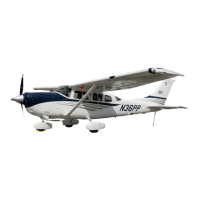
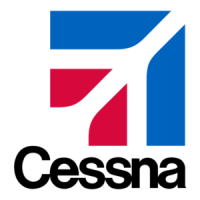
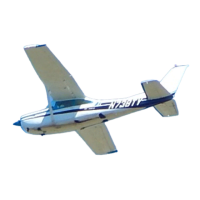



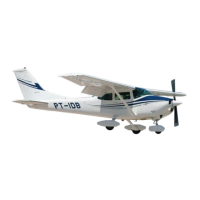
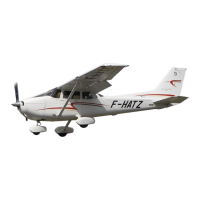
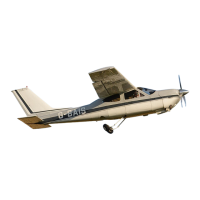
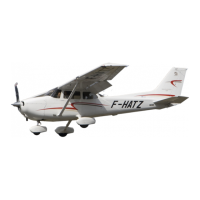
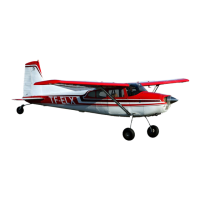
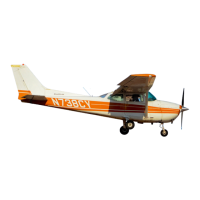
